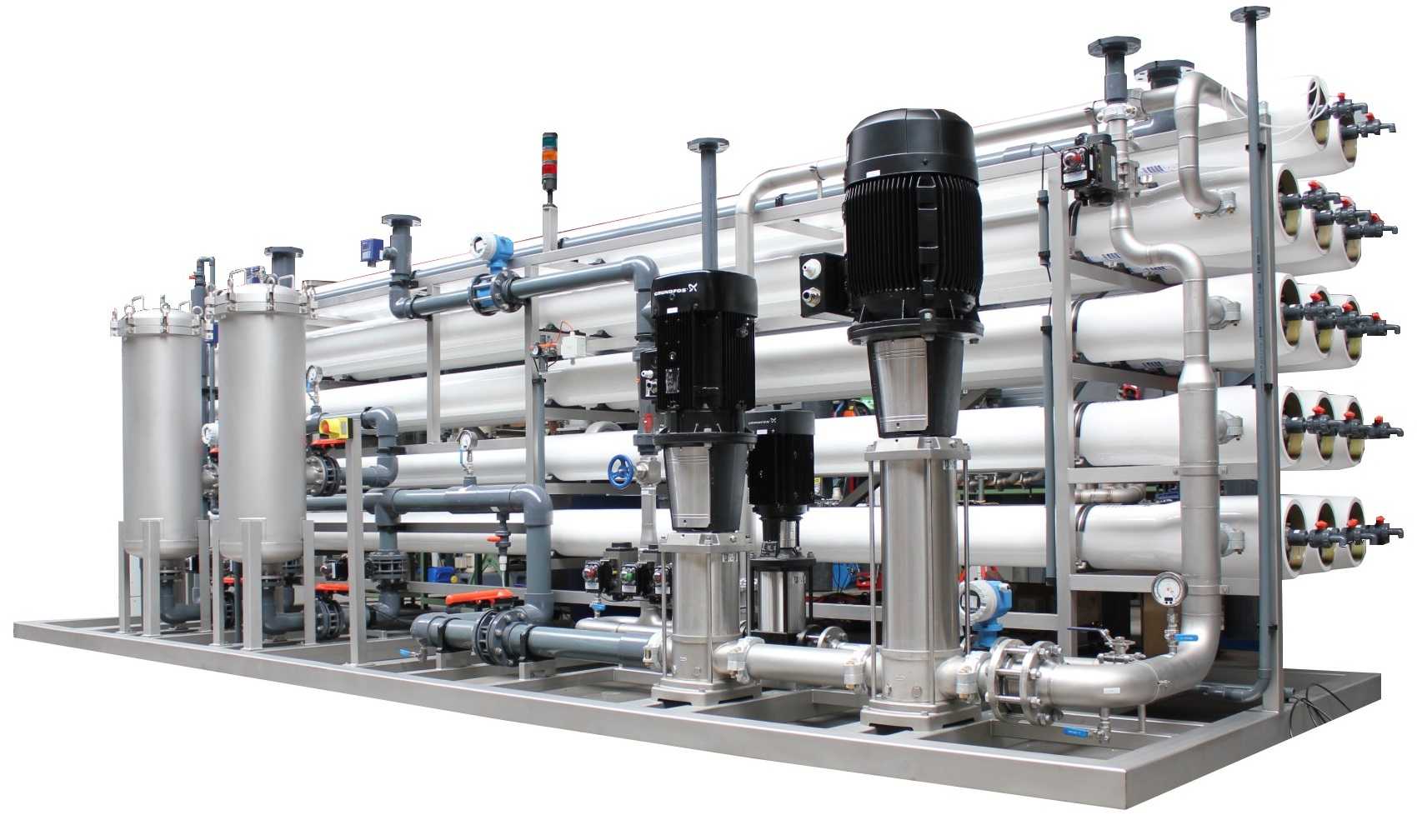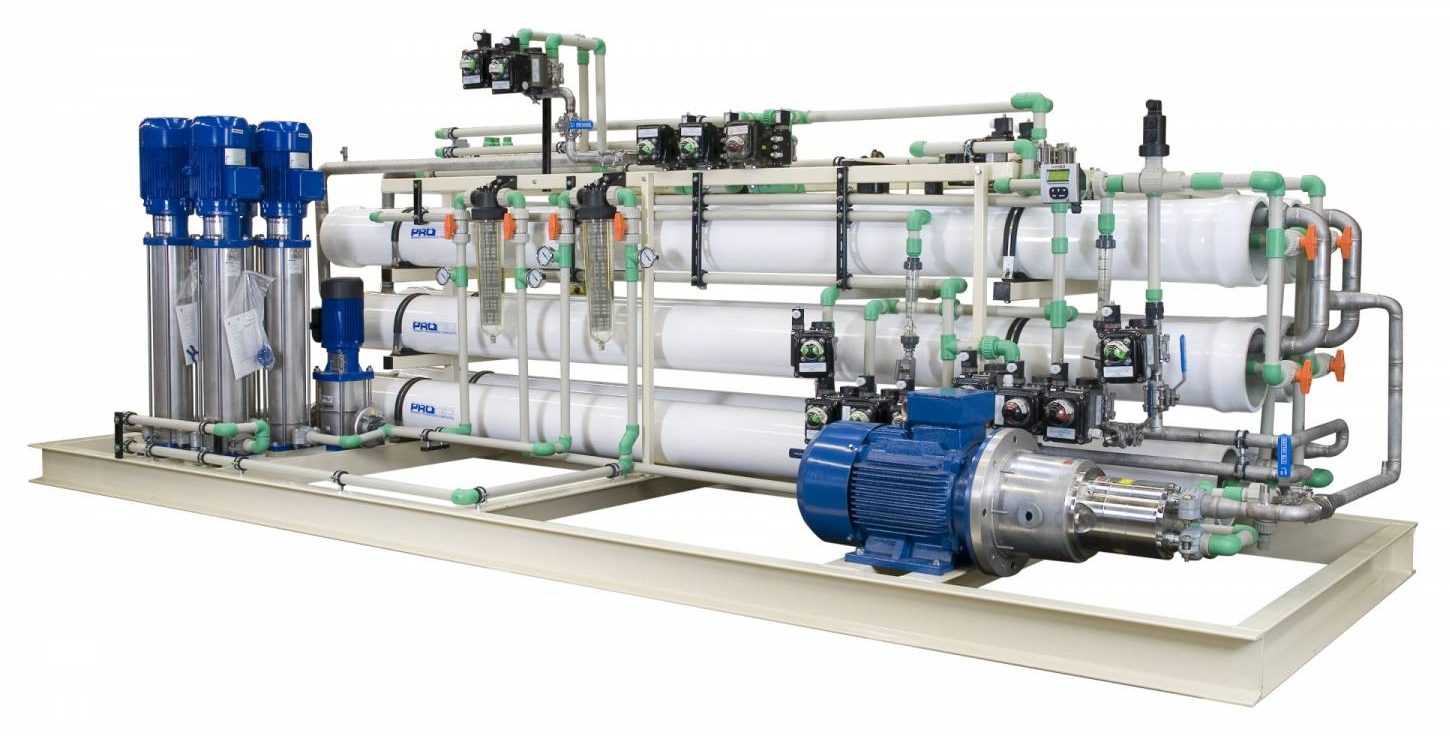Products
Reverse osmosis is used to remove dissolved materials in water. The most famous application is the production of drinking water out of sea water.
Reverse osmosis (RO) is a water purification technology that uses a semi-permeable (semipermeable) membrane to remove ions, molecules and larger particles out of water. Turbin develops and produces customer-specific reverse osmosis installations for various applications. For example, we also supply ATEX RO installations for waste water processing, off-shore and maritime applications. Turbin takes care of the complete unburdening and installation of the system. We also have various reverse osmosis rental installations available. The pilot installations are available to test your application on partial flow.
Applications:
- Drinking water production
- Manure processing
- Wastewater
- Digestate
- Off-shore
- Maritime
Rental installations
Turbin has several Reverse Osmosis, Ultrafiltration and Flotation units available for rental. The rental units are available on request. Turbin is always available for questions via a permanent contact person. We take care of the complete installation and service.
The power of Reverse Osmosis
Reverse osmosis uses a semipermeable (semi-permeable) membrane to remove particles from water. These particles are, for example, molecules, ions and larger particles. The filtering effect of the membrane is achieved by applying a pressure difference. The water with the solutes will then move to the side where the sum of the external pressure and the osmotic value is lowest. If the external pressure on the side of the concentrated solution is large enough, the pure solvent (without taking the dissolved substances) will be pressed to the other side. As a result, the solute remains on the membrane and a pure solvent is obtained.
Sewage treatment with RO
Turbin has more than 10 years of experience in wastewater treatment. We use reverse osmosis for this. Our installations have a high production capacity per hour.
RO pretreatment
Proper pre-treatment with both mechanical and chemical treatments is critical for an RO system to avoid contamination, scaling and costly premature RO membrane failure and frequent cleaning requirements. The following is an overview of common problems that an RO system experiences due to a lack of proper pretreatment.
Pollution
Contamination occurs when contaminants accumulate on the membrane surface, clogging the membrane. There are many contaminants in municipal water that are not visible to the human eye and are harmless to human consumption, but large enough to quickly contaminate an RO system. Contamination often occurs at the front end of an RO system and results in a higher pressure drop across the RO system and a lower permeate flow. This results in higher operating costs and ultimately the need to clean or replace the RO membranes. Contamination will eventually occur to some degree given the extremely fine pore size of an RO membrane, regardless of how effective your pre-treatment and cleaning schedule is. However, if you have good pre-treatment, you minimize the need to regularly address pollution-related issues.
Pollution can be caused by the following, among others:
- Particulate or colloidal material
- Organic substances
- Micro organisms
- Scaling (For example precipitation of Calcium carbonate)
Pre-treatments with ultrafiltration
- The filtering effect of ultrafiltration remains active at all times, because the basis of the filtration is purely based on mechanics. This way of filtering water is therefore very effective and sustainable. Ultrafiltration with membrane technology originally came from the healthcare sector, namely kidney dialysis. Dialysis is the exchange of substances dissolved in water through a semipermeable membrane. This filtering technique is similar to microfiltration, nanofiltration and reverse osmosis. The difference is in the pore size of the membrane.
- The ultrafiltration force is a difference in pressure across the membrane from feed to filtrate side. The membrane retains larger particles than the membrane pore. So the separation of microfiltration is based on particle size, it is a physical separation method.
- Membranes can be operated dead-end or cross-flow. At the dead end, all the water is forced through the membrane. In cross-flow, the supplied raw water is circulated along the membrane surface. This creates speed and turbulence so that heavily polluted water can be treated.
Pre-treatment with AFM
Another pre-treatment technique is that the water will go through a multimedia filter with AFM material. This step will filter the incoming water to approximately 5 microns. The AFM filters are self-cleaning, and there is continuous pressure monitoring to control and manage this. AFM is a unique filtration material and exceptionally well-suited for these applications. AFM should never require replacement.


Interested? Contact us for more information.
